TE WA – Kiribati’s link to its most Valued Resource, the Ocean
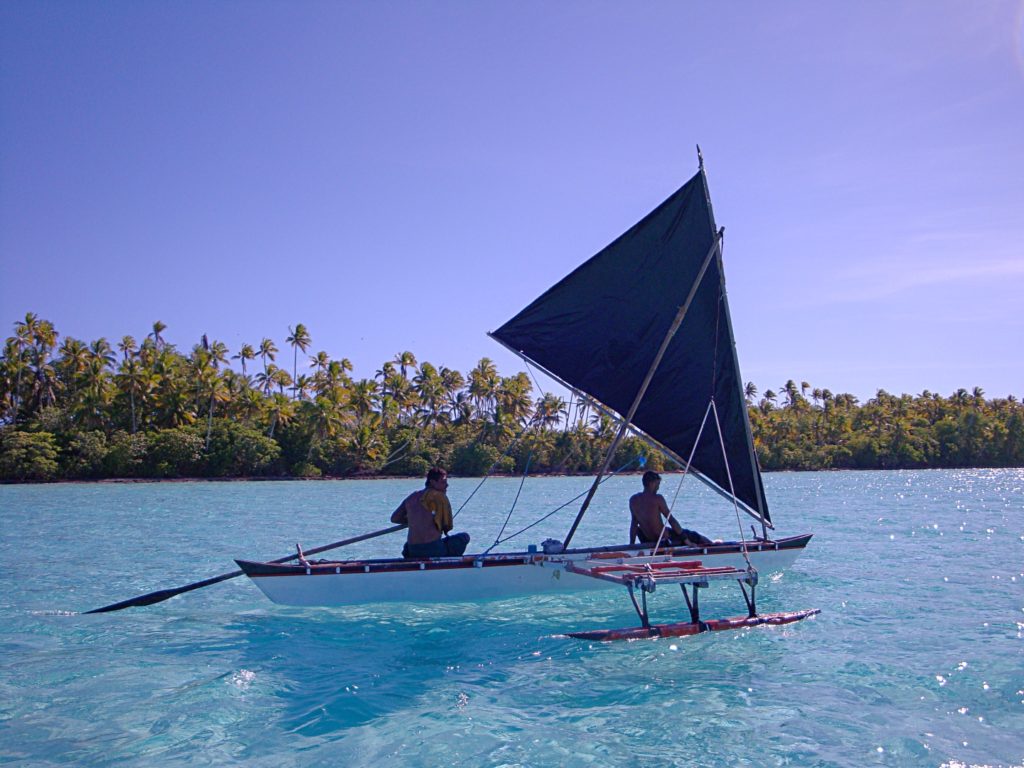

When arriving in Kiribati by air, one will be captivated by the sight of idyllic atoll islands that float gracefully over the vast Pacific Ocean. As the flight continues to descend, a few more islands will appear over the shimmering blue waters, each garlanded by a perpetual stretch of brilliant white sandy beach and picturesque turquoise lagoon. These islands are small in nature, so one can easily make out the distance between one island and another as the flight continues its downward journey into Bonriki International airport on the atoll island of Tarawa.
Experiential travellers and adventure seekers will appreciate from such a fascinating arrival experience that the life of an Ikiribati is centred around the ocean. With such an appreciation, one cannot help but wonder how the people of these isolated group of islands have remained connected as a people and how their link to their most valued resource, the ocean has remained strong for generations.
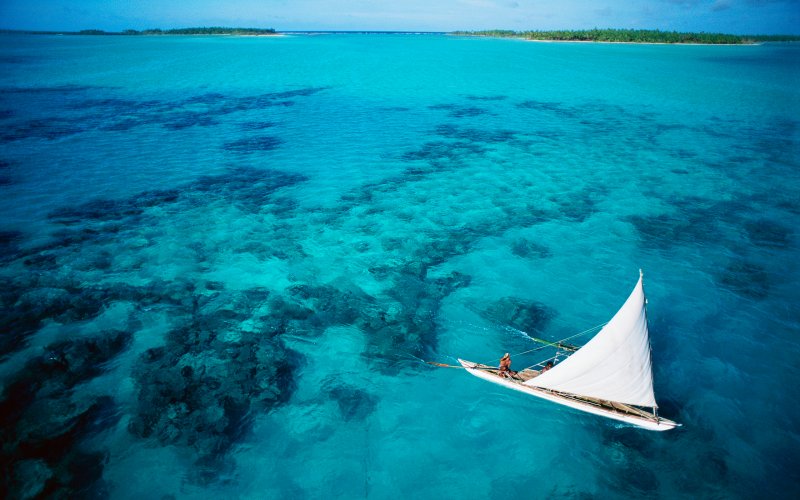
Photo by George Seinmetz: Canoe Sailing in Tabiteuea Atoll
Te Wa
For thousands of years, Pacific people have journeyed across the vast ocean, earning them the titles of master navigators, discoverers, and fishermen.
In Kiribati, the canoe, or Te Wa as it is known, has been their link to the ocean and has also connected them as a people of the seas.
Te Wa is more than just a canoe —it is a significant piece of architecture with a remarkable history.
With 33 individual islands making up the nation of Kiribati, Te Wa is a necessary apparatus to fish, travel, communicate and share supplies between each island.
Living remotely on coral atolls in the Pacific makes travelling between neighbouring islands necessary as it has been for thousands of years. However, with only natural materials found on the islands, Te Wa was always going to be a resourceful and imaginative vessel, engineered to travel with speed and grace.
Traditional Craftsmanship
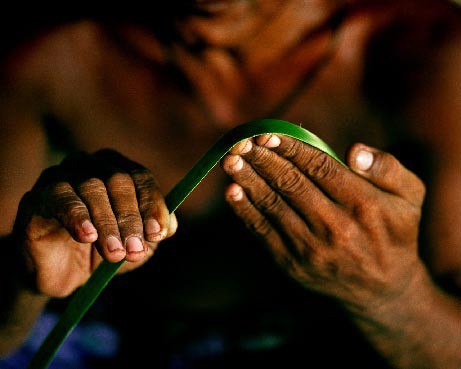
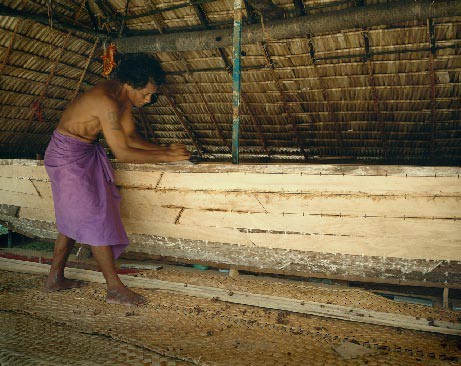
To watch a canoe craftsman at work is to witness a skill that has been passed down through generations. The maker, regardless of whether the vessel be for himself or for a client—forms a personal relationship with Te Wa. Each canoe is marked out and measured using his own hand span of the maker and without a screw or nail holding it into place. It is an intimate process that requires time and patience.
Days before the spirit level, the maker would position his workplace on land and face out to sea. The straight line in the horizon where the ocean meets the sky is his level. So even before the canoe is introduced into the saltwater, its destiny to sail towards the horizon is already decided.
The string that holds Te Wa together
Kiribati has maintained a traditional family structure where men take on the role as the head of the family and women become the carer and home maker. Because of these hunter/gatherer roles, the canoe is seen as male domain.
Still to this day, it is expected that the male will provide for his family and therefore the family’s relationship with the canoe is held to the highest esteem.
Traditionally women were not allowed to take part in the construction of the canoe nor were they allowed to take it to sea by themselves. However, women hold a significant role in the creation of Te Wa, which cannot be understated—they provide the string that holds Te Wa together.
Te Wa is bound by string made from dried coconut husks. Women, usually sitting in a circle, would tightly roll fibres of coconut husks along their thighs to form perfectly bound rope. Although this may seem like a menial task, it can take years to perfect the process of drying the husk, separating it and then coiling the husk to create an almost unbreakable thin twine. This rope holds riggers against raging tides and also holds fast when the salt water threatens to destroy even the toughest steel.
While men discover islands and fish for their family’s dinner, the women’s rope provides the strength that holds the man’s canoe together. Each role is equally reliant on the other.
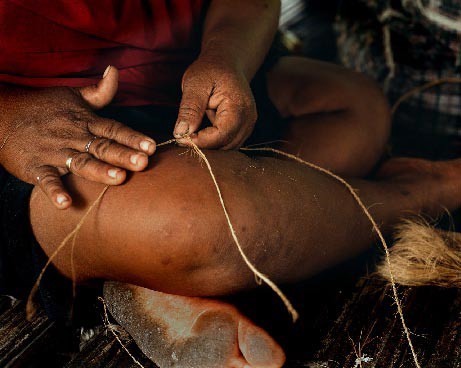
Photo by Tony Whincup: Woman making string used to bind Te Wa
What’s in a Name….
The final part of the building process is the naming of Te Wa.
The name of a Te Wa predicts the luck and character of the boat. A man will often stroll the shores, looking out to sea and abstain from eating until the name is decided. It is a serious decision and once made, the canoe is ready for its maiden journey to sea.
With thousands of years venturing throughout the Pacific, Te Wa symbolises everything the people of Kiribati have achieved.
Neighbouring island nations each have their own canoe, which has allowed them to follow tidal passages, and voyage and explore the largest ocean in the world.
Te Wa is part of who the Kiribati people are—it is their culture, their respect for the ocean and their family members all encompassed into one structure.
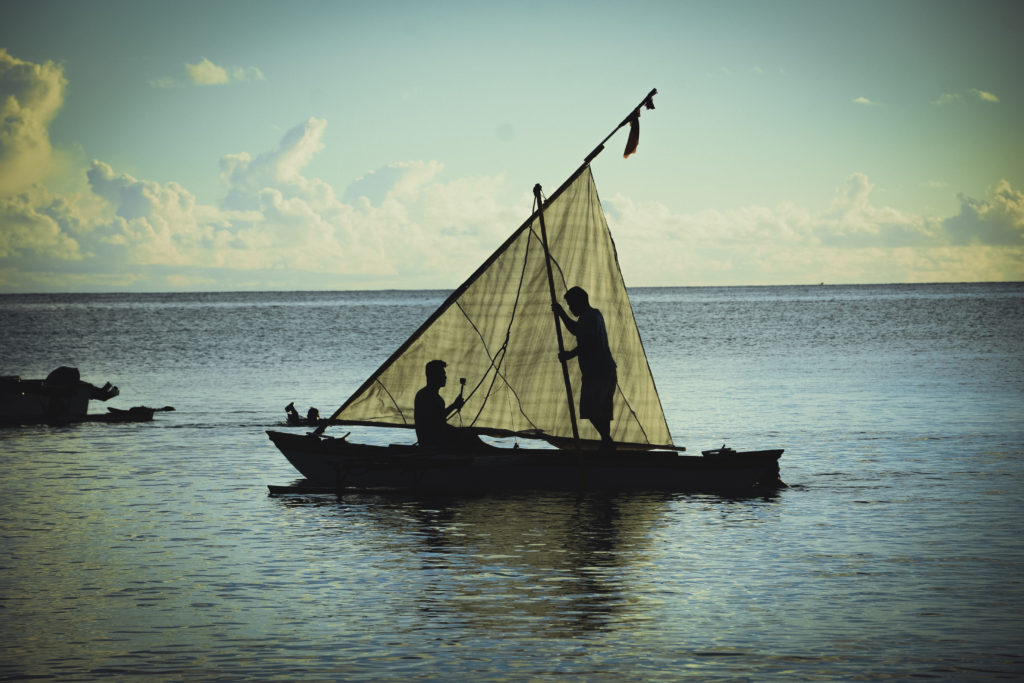
Photo by Raimon Kataotao: Getting ready to sail
Te Wa for different purposes
Te Baurua
The “Baurua,” is the king of the outrigger canoes built up to 100 ft. long, with 2 to 3 sails. It was used for distant voyaging and war during the old days. A fine specimen of the “Baurua,” probably the last of it’s kind to exist today called the ‘Taratai,’ now sits at the National Maritime Museum in Auckland NZ.
The ‘Taratai Baurua,’ 76ft long was built in the 1970s at the Taratai Village in North Tarawa built for James Siers who wanted to test that the Ikiribati islanders were capable of making great ocean voyages by canoe. The 76ft, double-ended outrigger was built without nails or screws, instead was lashed together with sennit (string made from coconut fibre) which made a 482 kilometre (300 miles) trip from Tarawa to Fiji. Oral history since the 1200s praised IKiribati as great navigators having to sail the Baurua between Futuna, Fiji, Tuvalu, Tonga Samoa and Kiribati which is 2,300 kilometres across the Pacific Ocean.
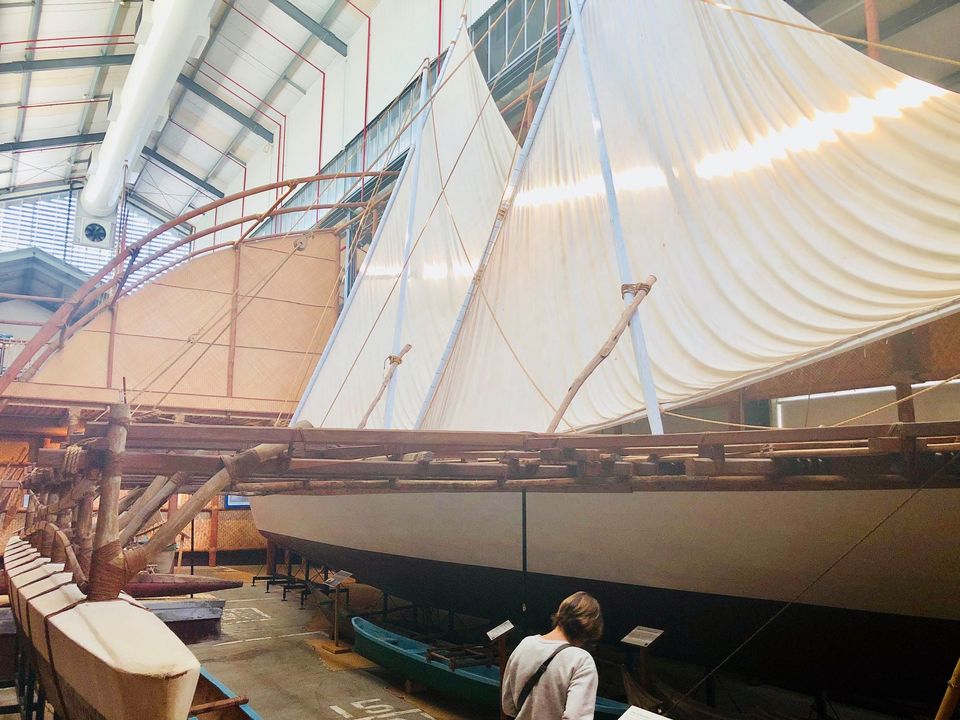
Te Baurua now kept at the NZ Maritime Museum, Auckland New Zealand
The Racing Canoe Te Wa N Kauwaia
The Kiribati racing canoe is a wonderfully elegant piece of engineering, achieving a fine balance between wind, ropes, and sail. Reputed to be the fastest canoe in the Pacific, they are testimony to the ingenuity of the people of these sparsely resourced atolls. It may be through the revival of racing as a sport, that the future of the traditional Kiribati sailing canoe will be sustained.
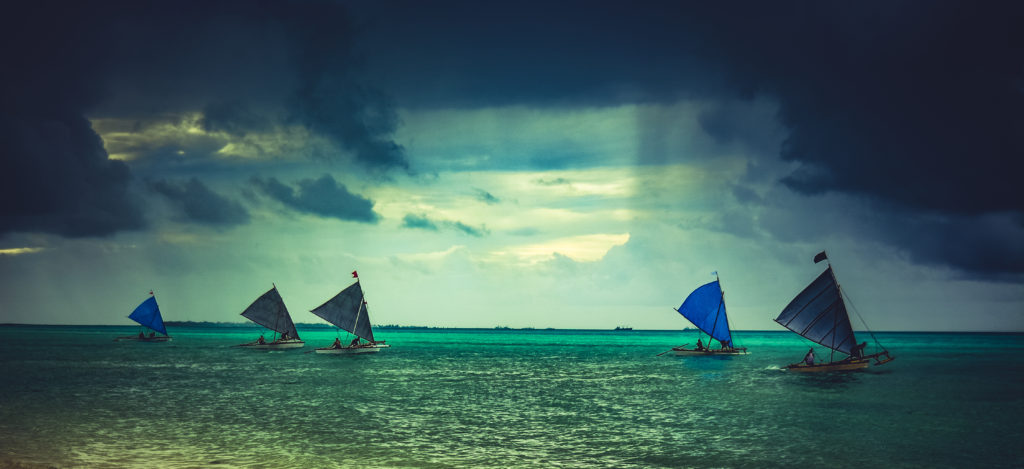
Photo by Raimon Kataotao: Canoe racing South Tarawa
The Fishing Canoe Te Wa N Akawa
The Fishing Canoe is usually smaller than the racing canoe. The fishing canoe is very important because we depend a lot on the sea for our primary source of protein, fish. If you have no canoe you feel incapacitated because you can’t go to the sea, you can’t get fish.
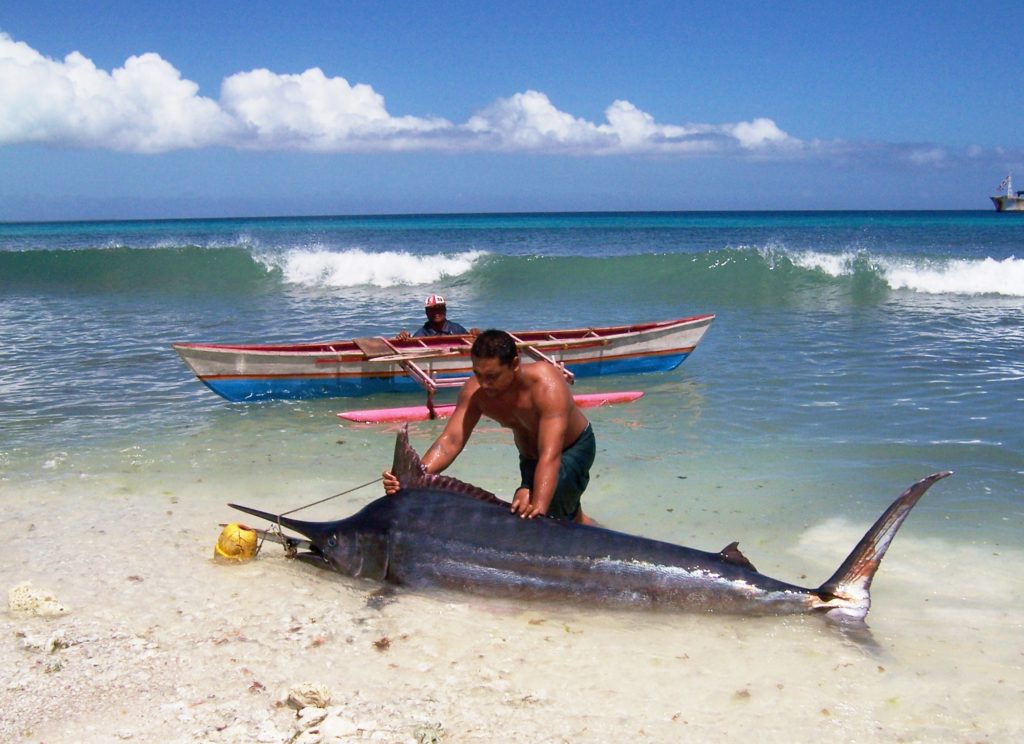
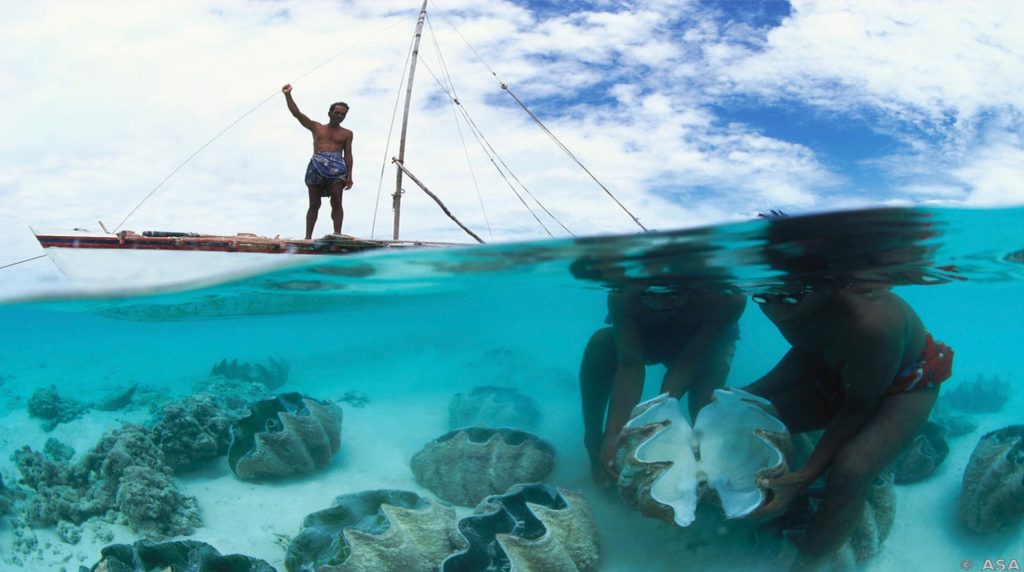
The canoes of Kiribati have been the inspiration for many canoe building projects. No high tech or expensive materials are required. If you have sailed more conventional boats before, you’ll have to unlearn many of the instincts that you’ve developed. There definitely isn’t a more enjoyable way to explore a tropical lagoon than on Te Wa.
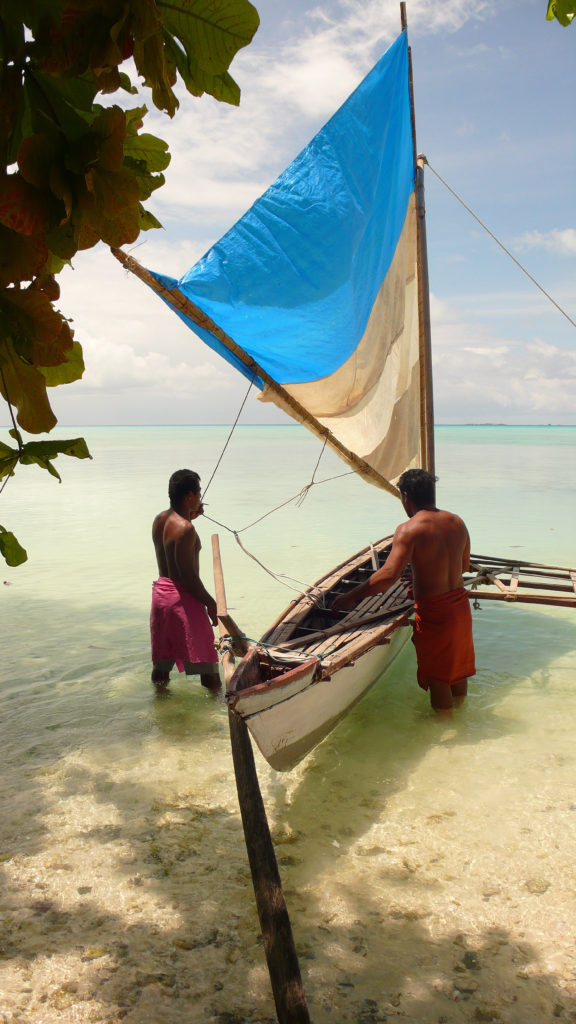
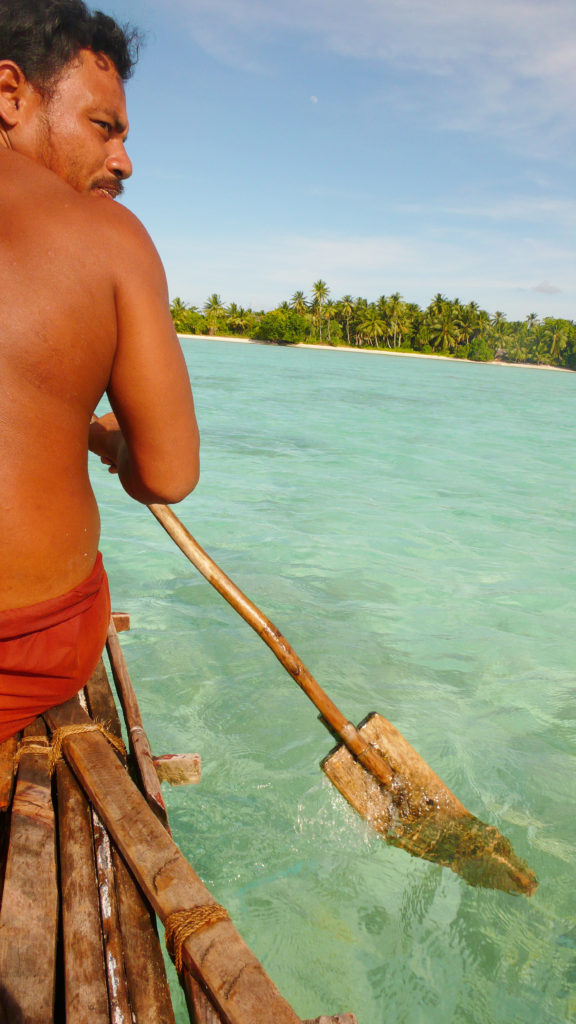
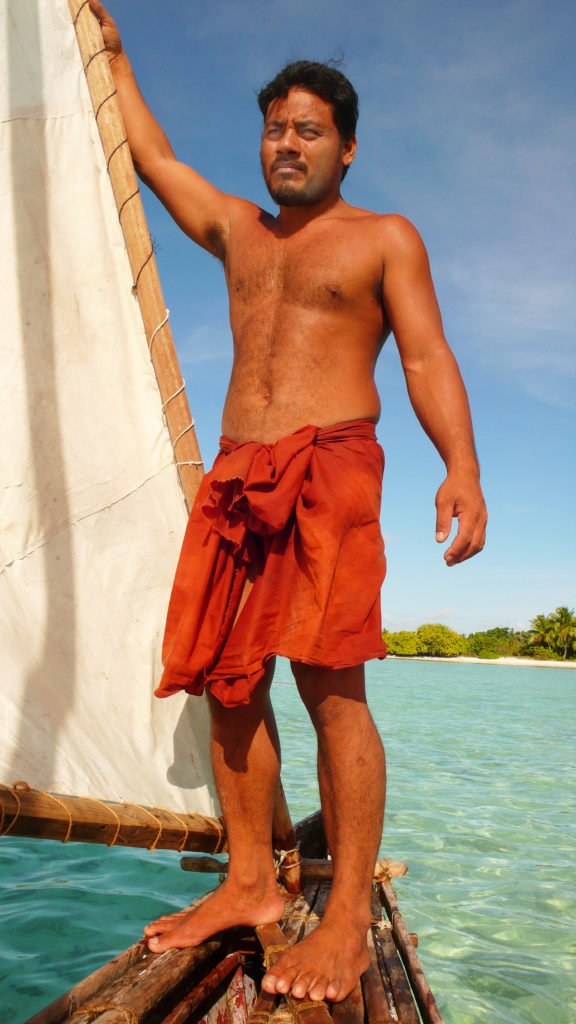
REFERENCES & ACKNOWLEDGEMENTS
This was prepared by Mr. George Kum Kee, Tourism Officer, Tourism Authority of Kiribati.
With referenced to Te Wa Traditional Canoes of Kiribati Photographic Essay by Tony Whincup and Te Wa, Kiribati’s Way to the Water by Lindsay Essay
